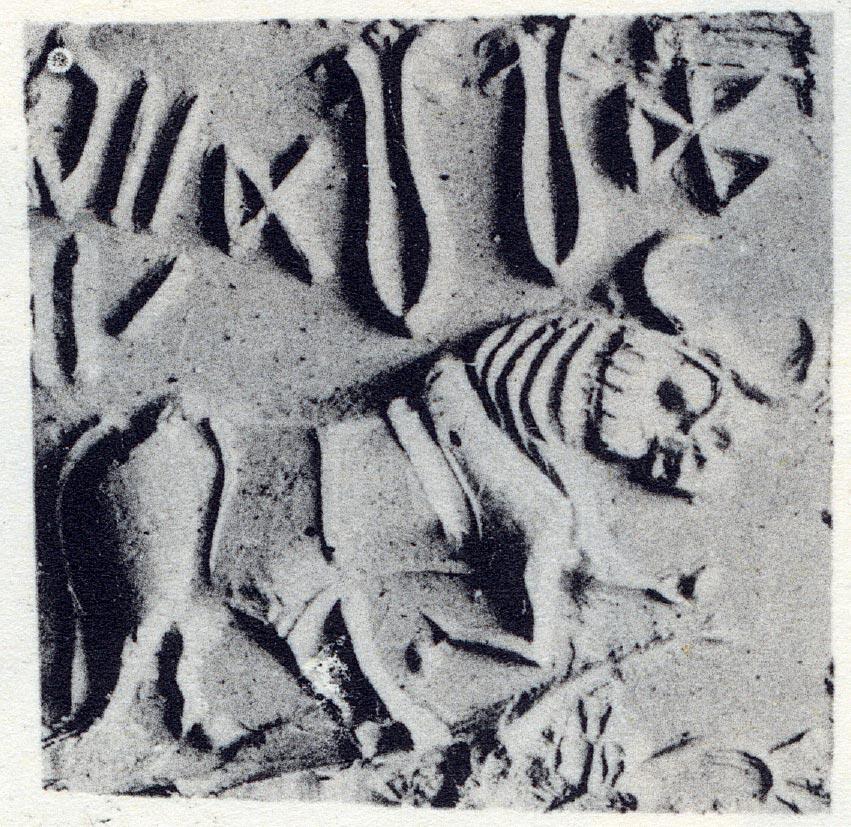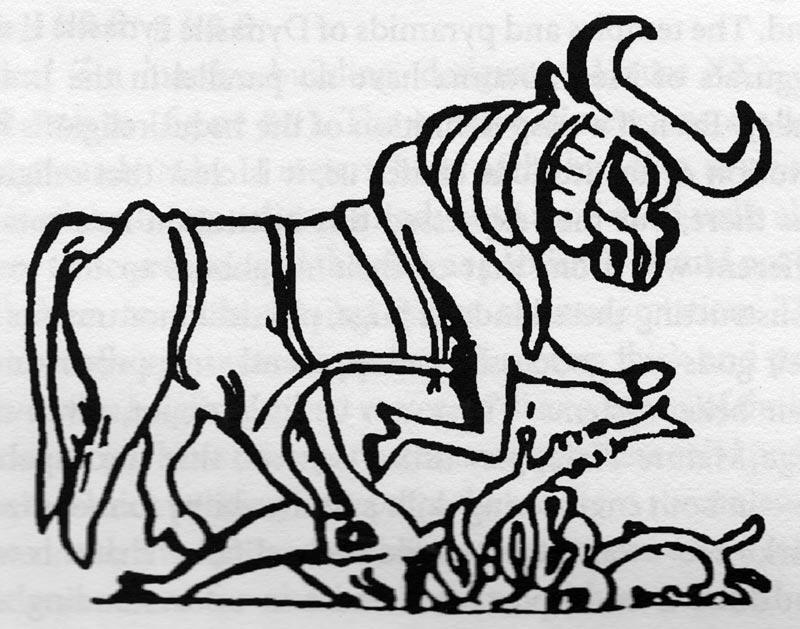March 14th, 2016
Gregory Possehl, whose drawing is shown of seal, writes "Mackay found an extraordinary seal in his excavations at Chanhu-daro. It shows a short-horned bull, Bos gaurus, above a prostrate human figure. He thought that the scene depicted an attack by the bull, and the human on the ground was attempting a defense against the trampling animal. In an essay on the seal, F.R. Allchin explains that the gaur is standing on its hind legs, slightly elevated above a human figure; its front legs are shown in excited motion. The bull's erect penis is shown in correct anatomical position. The figure below the gaur is less clearly shown and consequently more difficult to interpret. Allchin and Mackay see a headdress to the far right bottom of the seal impression.
Seen from Allchin's perspective, the scene is very dynamic and excited; the bull is about to take a female goddess in an act that might be seen as sexual violence, and yet the clear appearrance of her open, exposed genitals tells that she is a willing partner in the deed."
Later, Possehl quotes Mackay's reading of the seal: "We are led to wonder whether the omnipresent 'bull,' whether unicorn, bison or zebu, may not be the symbolic representation of the Heaven Father, and just as the deity with the plant sprout emerging from head or genitals may not be Mother Earth."




